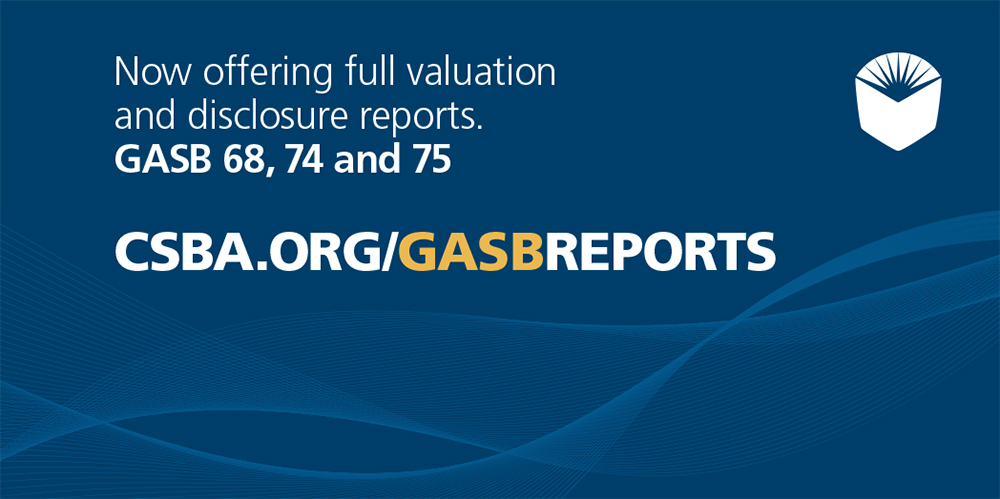The long and winding road to the state budget was completed on July 10, as Gov. Gavin Newsom signed the final set of budget bills into law.
After passing an initial budget bill, Senate Bill 101, on June 15, Gov. Gavin Newsom and the Legislature reached a final agreement on the 2023–24 state budget in late June. The final deal, executed in two follow-up bills known as “Budget Bill Jr.” and numerous budget trailer bills, retained most of the priorities emphasized by CSBA and filled in some of the finer details on figures and policy changes negotiated by the Legislature and Governor. Despite the tough revenue outlook faced in this year’s negotiations, CSBA’s advocacy — including the hundreds of members who met with the Legislature during the 2023 Legislative Action Week and in local meetings throughout the budget cycle — found success in the final budget.


“Everyone in education has a responsibility to harness the good to serve educational priorities while also protecting against the dangers that may arise as a result of artificial intelligence (AI) being integrated in ed tech,” according to the U.S. Department of Education Office of Educational Technology’s report, Artificial Intelligence and the Future of Teaching and Learning: Insights and Recommendations.
Published in late May, the report explains the basics of AI, examples of how it’s being used to support learning, considerations for building ethical and equitable school policies, and recommendations for education leaders as well as next steps the department is taking on the matter.
Educators are exploring opportunities to use AI-powered tools like speech recognition to increase the support available to students with disabilities, multilingual learners and others who could benefit from greater adaptivity, as well as ways to personalize learning, adapt lesson plans and more.

Troy Flint | tflint@csba.org
Editorial Director:
Kimberly Sellery | ksellery@csba.org
Staff Writers and Contributors:
Alisha Kirby | akirby@csba.org
Heather Kemp | hkemp@csba.org
Teresa Machado | tmachado@csba.org
Kristin Lindgren | klindgren@csba.org
Christa Matthews | cmatthews@csba.org
Director of Graphic Design & Branding:
Kerry Macklin | kmacklin@csba.org
Senior Graphic Designer:
Amanda Moen | amoen@csba.org
Susan Markarian | Pacific Union ESD
President-elect:
Albert Gonzalez | Santa Clara USD
Vice President:
Bettye Lusk | Monterey Peninsula USD
Immediate Past President:
Dr. Susan Heredia | Natomas USD
CEO & Executive Director:
Vernon M. Billy
California School News (ISSN 1091-1715) is published 11 times per year by the California School Boards Association, Inc., 3251 Beacon Blvd., West Sacramento, CA 95691. 916-371-4691. $4 of CSBA annual membership dues is for the subscription to California School News. The subscription rate for each CSBA nonmember is $35. Periodicals postage paid at West Sacramento, CA and at additional mailing office. POSTMASTER: Send address changes to California School News, 3251 Beacon Blvd., West Sacramento, CA 95691.
News and feature items submitted for publication are edited for style and space as necessary.

Career technical education:
It’s never too early to start
One of the best parts of serving as CSBA President is the opportunity it presents to visit schools and see the magical things that are taking place on campus and in our classrooms around the state. Markofer’s media program is a perfect example of why I cherish these visits. The sixth-grade student journalists who kicked off the press conference and interviewed me afterward had poise beyond their years and the ideal setting to hone their skills.

Expanded learning is defined by the California Department of Education as “before school, after school, summer, or intersession learning programs that focus on developing the academic, social, emotional, and physical needs and interests of students through hands-on, engaging learning experiences.”
Resources
In an effort to expand transitional kindergarten to all 4-year-old children in California by 2025–26, local educational agencies have focused their efforts on developing facilities and ensuring suitable staffing, but state leaders must turn their attention to promoting high-quality teaching and learning if universal TK is going to help all students meet learning goals, according to new research.
On May 16, Policy Analysis for California Education (PACE) released a brief based on 25 interviews with district leaders and national experts on early childhood education, along with a review of research and analysis of policy documents. Findings show LEAs have focused their efforts on the initial rollout of UTK around criteria the state has mandated, such as finding classrooms that meet facilities guidelines and hiring enough appropriately credentialed teachers and paraprofessionals to meet the required staffing ratio.
The board’s ongoing role in the Local Control and Accountability Plan

A key responsibility of a board of education is to hold the system accountable and ensure that progress is made toward achieving goals. As summer comes around, board members might feel that their duties regarding the critically important Local Control and Accountability Plan (LCAP) are “on a break” with school out and families on vacation. However, California trustees are required to approve their district’s LCAP annually by July 1. Though the steps leading up to approval typically take place in the spring months in advance of June graduations, eighth-grade promotions and other end-of-year activities, strategically minded boards recognize that understanding and supporting both the LCAP’s preparation and its implementation is a year-round job.
Governance teams have become familiar with the timetable of having district staff gather community input before staff’s initial reporting to boards in March. In April, district leaders (including trustees) should be deeply engaged in ensuring public input is sought, and many local educational agencies schedule specific LCAP study sessions at this point. A final draft LCAP presented to the board in May is well-positioned for approval in June, in time for the July 1 deadline. Trustee mindfulness about the way the LCAP supports student achievement can, and should, be continuous.

Closely related but importantly distinct from those parental rights cases are a series of cases and legal arguments currently being raised by teachers throughout the country regarding the same policies and teachers’ rights to interact with their transgender and/or social transitioning students in a manner consistent with their religious beliefs. Kluge v. Brownsburg Community School Corporation (64 F.4th 861 (7th Cir. 2023)), Tapia v. Jurupa Unified School District (C.D. Cal., No. 23CV0789 SP, 2023) and Mirabelli v. Olson (S.D. Cal., No. 23CV0768 BEN WVG, 2023) are three such cases. A comparison of the facts and legal arguments in each offers insight into areas of constitutional law on which a nationwide consensus will likely prove difficult to reach in the lower courts.
Governance
On a typical day, students are provided with traditional coursework in English, math, history and science, as well as progressive flight training. These students transition from a traditional desk to a cockpit in a training simulator where aviation mentors demonstrate flight controls and aeronautical concepts to prepare these students for a potential move into a plane for flight lessons. The shift from a traditional classroom to a flight simulator provides students with a true boost of purpose and motivation. In the coming year, the program will expand to include aviation mechanics, where students will learn how to build and repair aircrafts. This rewarding training combines technical expertise, problem-solving challenges and the satisfaction of contributing to aviation safety. Students who graduate with these skills will have the opportunity to continue this pathway at a college or within the aviation industry, which offers job opportunities around the world.

Students’ routines and relationships were disrupted during the pandemic, resulting in a rise in chronic absenteeism across the nation with roughly 10 million students — approximately one in every five — missing at least 10 percent of the academic year in 2020–21, according to recent federal data included in the report. That marked a 20 percent increase from pre-pandemic trends.
California’s rate of chronic absenteeism rose from 13 percent prior to the public health crisis to 30 percent.

The new taskforce was convened following the June 1 release of a joint letter from Gov. Gavin Newsom, Attorney General Rob Bonta and Superintendent of Public Instruction Tony Thurmond cautioning against book banning or restricting access to curriculum and instructional materials that “reflect the diverse experiences and perspectives of Californians.”
Questioned during a press conference prior to the taskforce meeting about how state efforts align with local control in schools, Thurmond said, “There’s no doubt that this is a state with local control as a practice and priority, but as you’ve heard from my colleagues, there are at least two bills that aim to curtail the actions of those who are hiding racism and hate under the guise of local control. Local control doesn’t give you the right to inflict pain on someone or to threaten someone. Students have been asking for the right to not be bullied because they’re LGBTQ. They have been bullied by adults simply for raising their voices for what they believe. So, there will be legislation — there is legislation — that will address the actions of these school boards.”
An East Bay school district’s efforts to improve attendance and academic outcomes for one of its most vulnerable student groups — foster youth — was discussed during a recent California Department of Education webinar, “Reducing Chronic Absenteeism for Foster Youth: MTSS Case Study.”
As local educational agencies across the state struggle with chronic absenteeism post-pandemic, David Haupert, administrator for District and School Continuous Improvement at Contra Costa County Office of Education, explained how the implementation of a Multi-Tiered System of Supports has helped decrease chronic absenteeism this year among students in foster care by 11 percent in Mt. Diablo Unified School District.
Mt. Diablo USD has been receiving differentiated assistance from CDE for declining outcomes for foster youth, students experiencing homelessness and African American students, according to Haupert. Like many districts, Mt. Diablo has struggled to meet the needs of students in the margins. From 2017 to 2019, Haupert noted worsening graduation rates, chronic absenteeism and suspension rates for those student groups.

School districts across the state are experiencing a high level of declining enrollment, as evidenced by California Department of Education data released in April. Even before the pandemic, many California communities were observing population drops and corresponding enrollment declines in K-12. The pandemic exacerbated declines as students left public schools and the state, but the most recent numbers show some rebound.
For the 2022–23 academic year, preliminary enrollment figures show the statewide total at 5,852,544 students, down 39,696 (or 0.67 percent) from the previous year. At grade level, the largest increases in statewide public school enrollment were in kindergarten, seventh and 11th grades. The largest decreases were in second, eighth and 10th grades. In comparison, the 2021–22 school year showed a statewide decline of 1.84 percent, representing more than 110,000 students.
The data release was accompanied by a CDE webinar, “Countering Declining Enrollment,” which can be found on the department’s Facebook page. During the event, panelists shared examples of best practices that school districts may be able to use to offset declining enrollment such as expanding dual-language immersion programs and leveraging science, technology, engineering, arts and mathematics (STEAM) programs to attract families back to public schools.

In the June 15–16 meeting of the California Commission on Teacher Credentialing, the commission approved the transmittal of the second annual report to the Legislature on implementation on Senate Bill 488, which eliminates the Reading Competence Instruction Assessment (RICA), and had an impassioned discussion on the passing rates for Commission-approved field tests.
Chair Marquita Grenot-Scheyer opened the meeting acknowledging the challenges facing new teachers. “They will be facing censorship of ideas, history and an intolerance for diversity that is unprecedented,” she said. “Such efforts to restrict teaching and learning have huge implications for educators and students who have been impacted by local anti-critical race theory efforts. Most importantly, these efforts obstruct students of color and white students from learning together about issues of race and diversity. … Our collective work is critical and fundamental to building the next generation of citizens who will help shape our democracy.”

CSBA’s fact sheet on student participation on boards of education (bit.ly/3JtOfON) notes that the presence of student board members can “enable governance teams to incorporate student voices in their district responsibilities, elevating student perspectives on education policy decisions that they may not have otherwise considered.” In addition to making valuable contributions to policy discussions based on their experience, student members “get the opportunity to meaningfully participate in the governance process of their district, learn essential democratic skills, and represent and advocate for their peers.”
While many local educational agencies have the best intentions to incorporate student voice through a student trustee position, the LEAs evaluated in the study often fell short. The study found that student trustees have limited participation in most board meetings and were often relegated to simply giving reports of school-based activities.
July 13–Nov. 9
Executive Assistants Certification Program
Aug. 25
The Brown Act
Aug. 10
CSBA Roadshow – Riverside/San Bernardino | Riverside
MIG Course 1: Foundations of Effective Governance/Setting Direction | San Marcos
CSBA Roadshow – Los Angeles West | Santa Monica
Aug. 16
CSBA Roadshow – San Diego South | Chula Vista
Aug. 30
CSBA Roadshow – San Luis Obispo | San Luis Obispo

Thanks for reading our July 2023 newsletter!







